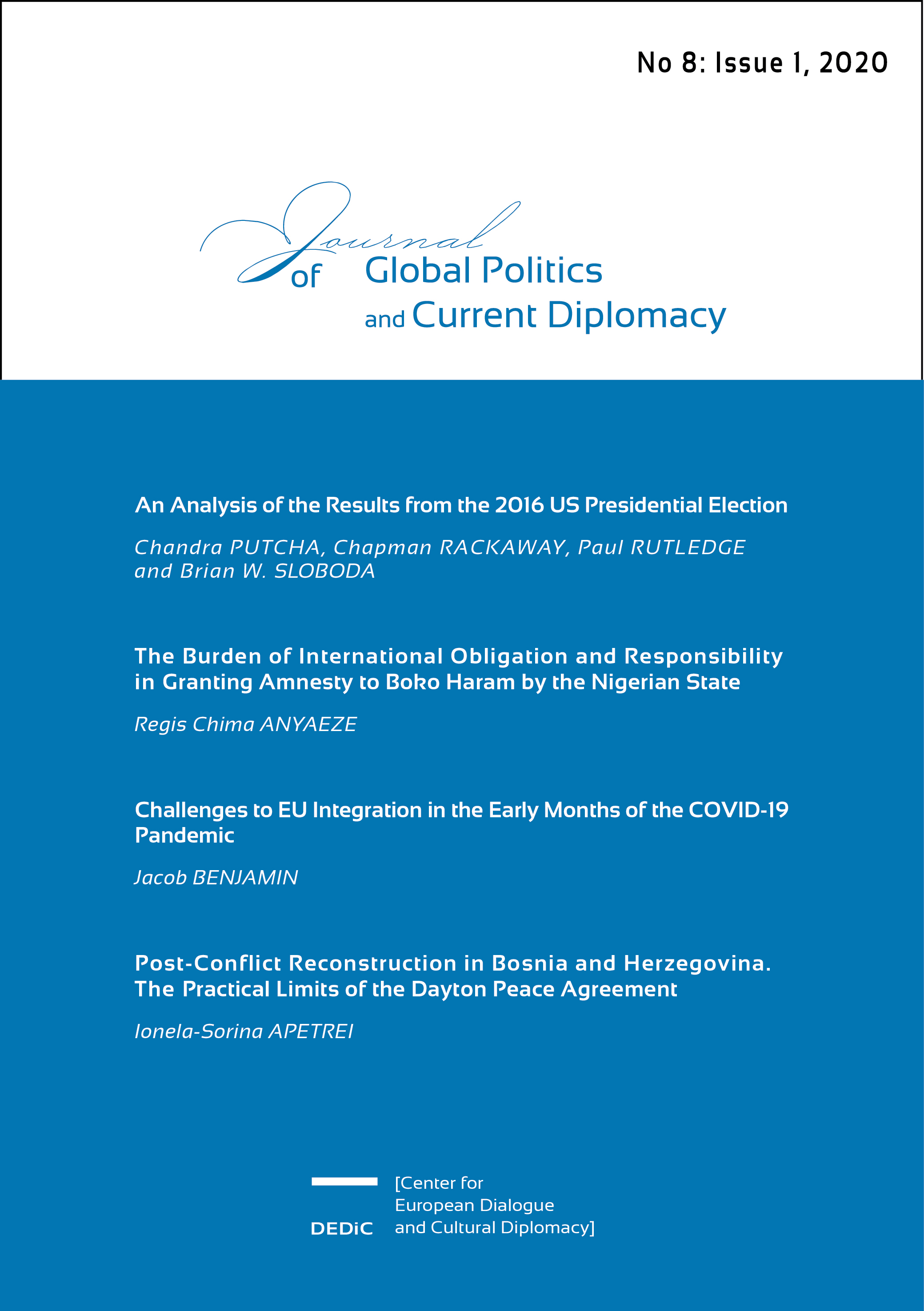Post-Conflict Reconstruction in Bosnia and Herzegovina.
Post-Conflict Reconstruction in Bosnia and Herzegovina.
The Practical Limits of the Dayton Peace Agreement
Author(s): Ionela-Sorina ApetreiSubject(s): Recent History (1900 till today), Government/Political systems, Security and defense, Nationalism Studies, Transformation Period (1990 - 2010), Ethnic Minorities Studies, Politics and Identity, Identity of Collectives, Peace and Conflict Studies
Published by: Centre of European Dialogue and Cultural Diplomacy
Keywords: Dayton Peace Agreement; conflict resolution; post-conflict reconstruction; Bosnia and Herzegovina;
Summary/Abstract: Yugoslavian dissolution has had an effect of increasing segregation between the main ethnic groups in Bosnia and Herzegovina, which led to the outbreak of civil war between Croats, Serbs, and Muslims from 1992 to 1995. The Dayton vision of Bosnia and Herzegovina's operation has importance for the foundation of our research objective. This paper is focused on the High Representative's reports, between 2006 and 2007. Our research objective is to identify to what extent the Dayton Agreement sets out the steps to be taken to establish a climate of peace and post-conflict recovery. However, the Dayton Agreement limited the capac¬ity of international bodies to lead Bosnia and Herzegovina to reach the objectives established at the beginning. As a consequence, Bosnia and Herzegovina emerge as a territorially frag¬mented, politically, ethnically and religiously fragmented state with non-functional institu¬tions dominated by disagreements between the three ethnic groups and corruption.
Journal: Journal of Global Politics and Current Diplomacy
- Issue Year: 8/2020
- Issue No: 1
- Page Range: 69-85
- Page Count: 17
- Language: English

